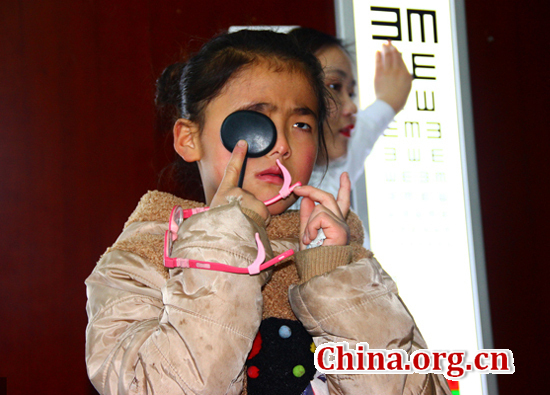40% primary school kids are nearsighted in China
Xu Feifei, an 11-year-old boy from Xuzhou, Jiangsu Province, suffered from a sudden acute eye disease which has almost led to blindness. The whole ailment was caused by excessive eye fatigue during the winter vacation, during which he played computer games for a continuous 10 days and nights.
|
|
|
A girl, Ruru, has an eyesight test in Huaiyang County, Zhoukou in Henan Province. She and her two siblings suffer from severe nearsightedness. [Photo/China.org.cn] |
Many youngsters in China nowadays are increasingly indulged in computer games and other electronic products, and are unable to extricate themselves. This is followed by a series of health problems, with the most typical case being myopia, or nearsightedness.
According to the latest research report released by the World Health Organization (WHO), the nearsightedness rate among Chinese juveniles ranks first in the world – 70 percent of high school and college students. The rate is nearly 40 percent in primary school students, while it is only 10 percent for their peers in the United States.
The WHO research report says that the number of nearsighted people in China has reached 600 million, nearly approaching half of the country’s total population.
Experts attribute the soaring nearsightedness rate in China to the unhealthy lifestyles and learning styles which parents impose on their children.
On the one hand, to achieve high scores in exams, children spend too much time indoors studying and have not enough time outside in the sunlight. On the other hand, a growing number of high-tech products, such as smart phones and tablet PCs, make children focus their eyes and attention on fluorescent screens for long periods of time, resulting in excessive eye fatigue.
Experts suggest that youngsters maintain a proper balance between study and rest so as to protect their eyesight, and parents should play a correspondingly active role in the process.
